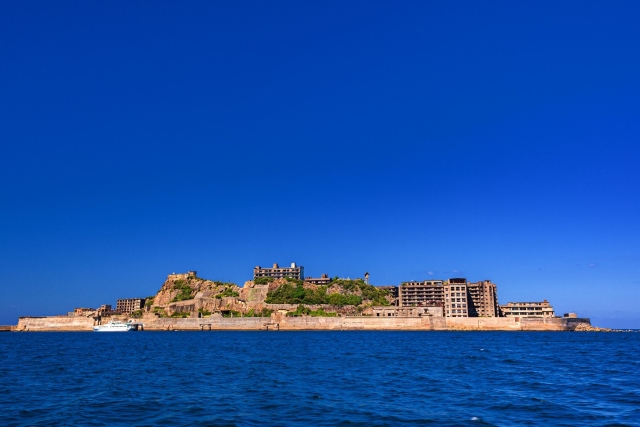Introduction to Instagrammable Photos in Nagasaki Prefecture
Nagasaki Prefecture is home to famous tourist spots such as Nagasaki Shinchi Chinatown, Dejima, Glover Garden, Oura Cathedral, and the Nagasaki Atomic Bomb Museum. Additionally, there are many charming islands rich in nature and history, including Tsushima, Iki, the Goto Islands, Kujuku Islands, Gunkanjima (Battleship Island), and Ikeshima.
Dejima
Dejima is an artificial island where foreign trade was officially permitted during the Edo period when Japan restricted overseas trade. Built in 1636, it initially served to prevent the spread of Christianity by the Portuguese. Later, it became a Dutch trading post with warehouses and facilities for import and export activities. After the closure of the Dutch trading post in 1859, Dejima was eventually connected to the mainland through reclamation, losing its original appearance. In 2000, to commemorate the 400th anniversary of Japan-Netherlands relations, the Nagasaki Dejima Wharf, a commercial complex, was opened in the Nagasaki Harbor Bay area.
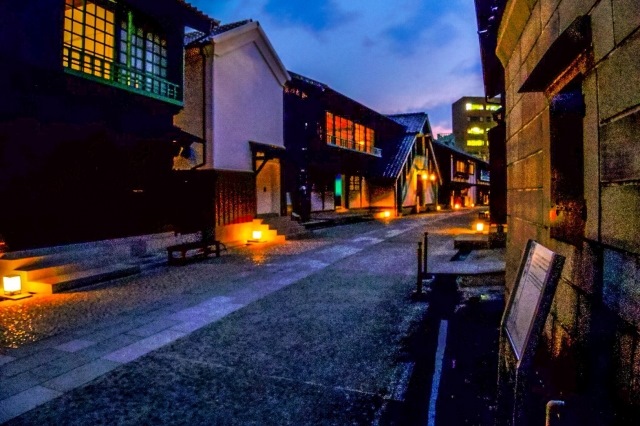
Instagram Worthiness:★★★★★
Photography Opportunity:All seasons
Location Information: ▶Map, Hours, Routes
Transportation Information: 1 minute walk from Dejima Station
Glover Garden
Glover Garden features the former residence of Thomas Blake Glover, a Scottish merchant, as well as three Western-style buildings (the former Glover House, former Ringer House, and former Alt House) and six other historic buildings, all relocated and restored. These structures showcase wooden Western-style architecture and a blend of Japanese and Western design, with distinctive verandas and chimneys. The garden offers a panoramic view of Nagasaki Harbor and Mount Inasa.
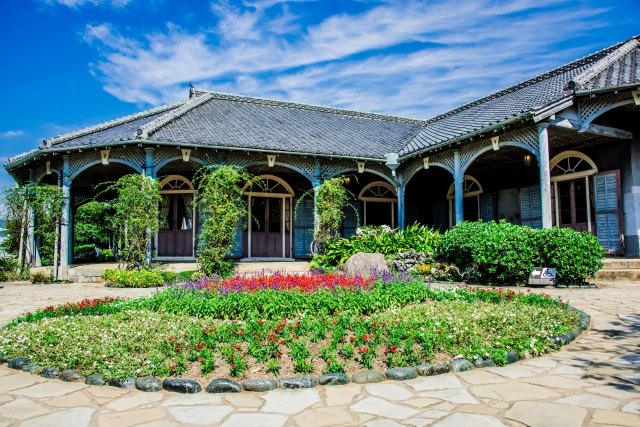
Instagram Worthiness:★★★★★
Photography Opportunity:All seasons
Location Information: ▶Map, Hours, Routes
Transportation Information: 11 minutes by bus from Nagasaki Station
Oura Cathedral
Completed in 1864, Oura Cathedral is the oldest Catholic church in Japan. Designed under the guidance of French missionaries Fathers Furet and Petitjean, it underwent expansions in 1875 and 1879, altering its appearance and layout and changing the exterior walls from wood to brick. However, the main interior parts remain as they were initially. Oura Cathedral symbolizes the perseverance of Christian faith during over 250 years of prohibition, enduring persecution and recovering from atomic bomb damage, making it a significant historical building in Japan.
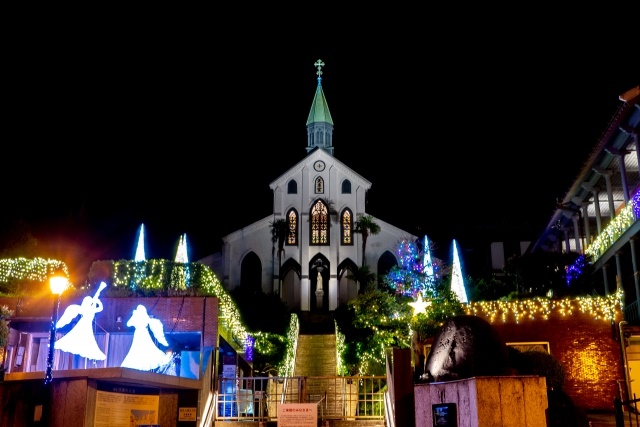
Instagram Worthiness:★★★★★
Photography Opportunity:All seasons
Location Information: ▶Map, Hours, Routes
Transportation Information:11 minutes by bus from Nagasaki Station
Nagasaki Atomic Bomb Museum
On August 9, 1945, Nagasaki City was devastated by an atomic bomb, killing about 150,000 people and reducing the city to ruins. The Nagasaki Atomic Bomb Museum presents the tragic circumstances of the bombing, the background leading to the atomic bomb drop, and the history of nuclear weapon development. Nearby is the Peace Park, featuring a 9.7-meter-tall, 30-ton Peace Statue made of bronze by a Nagasaki-born sculptor, symbolizing divine love and Buddhist compassion. The statue’s right hand points to the sky, indicating the threat of nuclear weapons, while the left hand extends horizontally, symbolizing peace. The lightly closed eyes pray for the repose of atomic bomb victims.
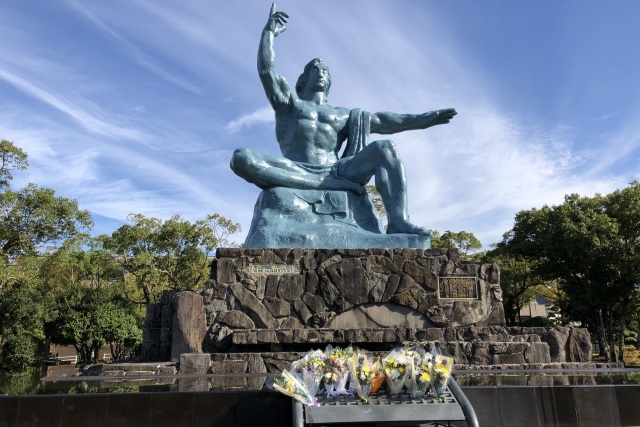
Instagram Worthiness:★★★★★
Photography Opportunity:All seasons
Location Information: ▶Map, Hours, Routes
Transportation Information:4 minutes walk from Atomic Bomb Museum Station
Megane Bridge
Megane Bridge, named for its shadow resembling eyeglasses, is a famous landmark in Nagasaki City. Built in 1634 by a Zen priest from Kofukuji Temple, it is one of Japan’s three famous bridges alongside Nihonbashi and Kintai Bridge. When the water level is low, you can descend the steps to walk along the riverbank. The heart-shaped stone on the Nakashimagawa embankment near Megane Bridge is known as a love fulfillment power spot. During Nagasaki’s Lantern Festival, the bridge area is adorned with lanterns, attracting many visitors.
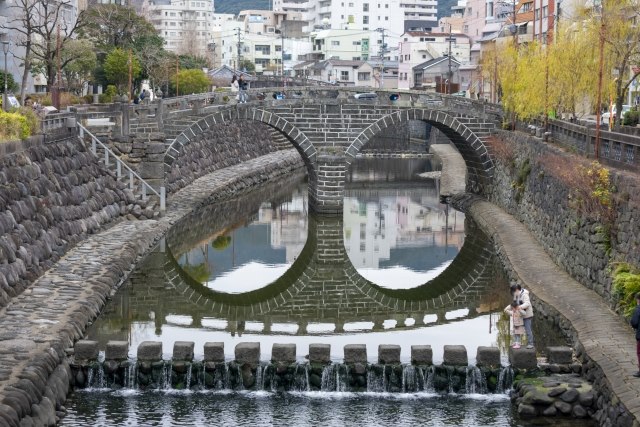
Instagram Worthiness:★★★★★
Photography Opportunity:All seasons
Location Information: ▶Map, Hours, Routes
Transportation Information: 4 minutes walk from City Hall Station
Nagasaki Shinchi Chinatown
Nagasaki Shinchi Chinatown, along with Yokohama Chinatown and Kobe Nankinmachi, is one of Japan’s three major Chinatowns. It originated in the late Edo period to early Meiji period when resident Chinese opened Chinese restaurants and souvenir shops. Conveniently accessible by tram from JR Nagasaki Station in about 10 minutes, it has a history of land reclamation for building warehouses for trade goods from China during the mid-Edo period. The Chinatown is located at a 250-meter crossroad with about 40 Chinese restaurants, confectionery shops, and general stores. Enjoy visually appealing street food like Chinese sweets and pork buns, as well as comparing unique tastes of Nagasaki specialties like champon and sara udon at different shops. During the Lantern Festival in winter, the area is illuminated with around 15,000 lanterns, featuring large lantern displays and traditional Chinese dance and musical performances. Originally started as a Lunar New Year celebration, this event is now a beloved winter tradition in Nagasaki.
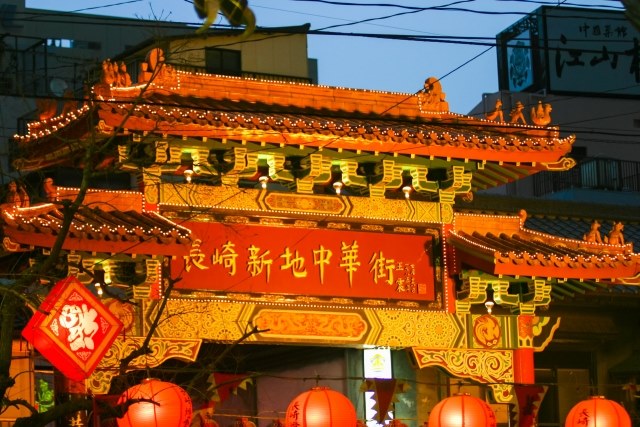
Instagram Worthiness:★★★★★
Photography Opportunity:All seasons
Location Information: ▶Map, Hours, Routes
Transportation Information: 4 minutes walk from Shinchi Chinatown Station
Gunkanjima (Battleship Island)
Hashima, registered as a World Heritage site, is a small island located about 40 minutes by boat from Nagasaki Port. Originally an undersea coal mine, it was artificially created by reclaiming the surrounding reefs. The high-rise reinforced concrete buildings gave it the appearance of a battleship, hence the name Gunkanjima (Battleship Island). In its peak during the 1960s, it had a population of about 5,300, the highest population density in Japan. The island had facilities like schools, hospitals, cinemas, and pachinko halls, providing all necessary living amenities. However, with the shift from coal to oil, the island declined, and the mine closed in 1974, leaving it uninhabited. Since 2009, the island has been open to the public, attracting many visitors for tours.
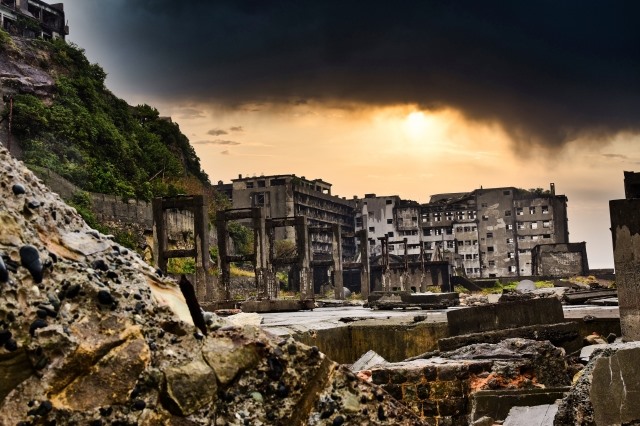
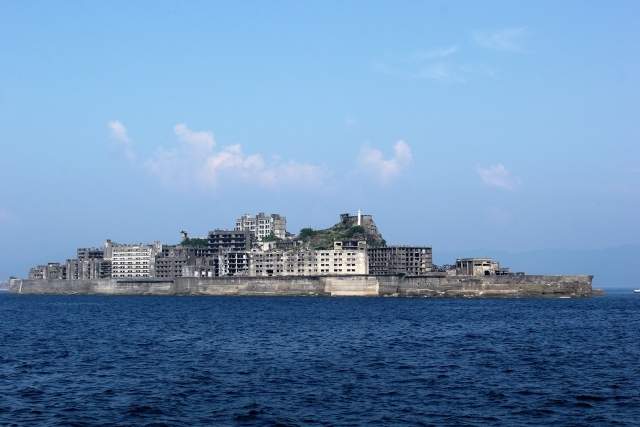
Instagram Worthiness:★★★★★
Photography Opportunity:Check the operating schedule
Location Information: ▶Map, Hours, Routes
Transportation Information: 3 hours by ferry from Nagasaki Port
Ikeshima
Located off the coast of Nagasaki, Ikeshima is known as an important coal mining island along with Gunkanjima. Coal mining started in 1952, and extraction began in 1959. However, due to the decreased demand for coal with the advancement of electrification, the mine closed in 2001. Currently, about 150 people live on Ikeshima, unlike Gunkanjima, which is completely uninhabited. The island retains many coal mining-related ruins. Tours are available to visit the mine, often guided by former miners. The tour includes a ride on a trolley train into the mine, viewing mining equipment, and experiencing simulated operations to learn about the working conditions of past miners.
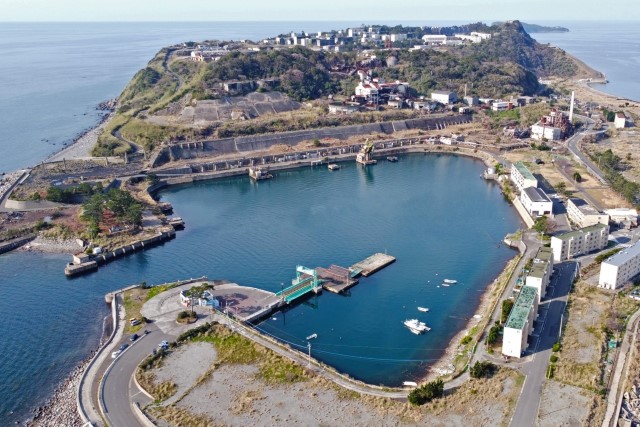
Instagram Worthiness:★★★★★
Photography Opportunity:Check the operating schedule
Location Information: ▶Map, Hours, Routes
Transportation Information: 30 minutes by ferry from Kannaura Port
Goto Islands
Located in the western part of Nagasaki Prefecture, the Goto Islands consist of about 150 islands of various sizes. Particularly, Fukue Island, Hisaka Island, Narushima, and the surrounding islands are known for their majestic landscapes, cobalt-blue sea, and white sandy beaches. Accessible by plane in about 30 minutes or by jetfoil in about 1 hour and 30 minutes from Nagasaki, the islands have a mild climate with an average annual temperature of 17 degrees, making them a pleasant destination year-round.
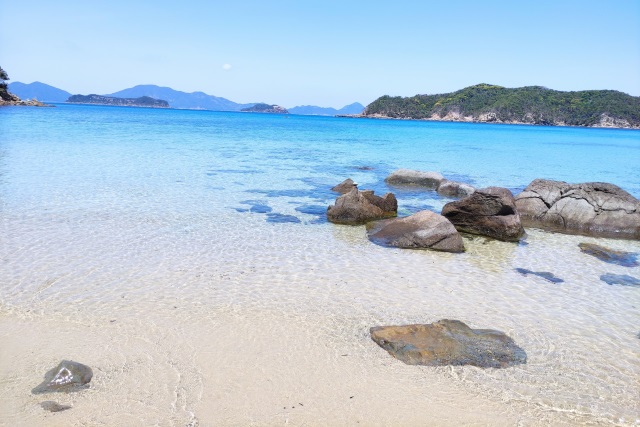
Instagram Worthiness:★★★★★
Photography Opportunity:Check the operating schedule
Location Information: ▶Map, Hours, Routes
Transportation Information: 1 hour 25 minutes by ferry from Nagasaki Port
Kujuku Islands
Kujuku Islands are located in a sea area about 25 km from Sasebo Bay to Hirado, consisting of four inhabited islands and 204 uninhabited islands along a complex ria coastline. The name “Kujuku” means “countless,” highlighting the area’s dense island clusters. Known for its rich greenery and nutrient-rich sea, Kujuku Islands are a biodiversity treasure trove.
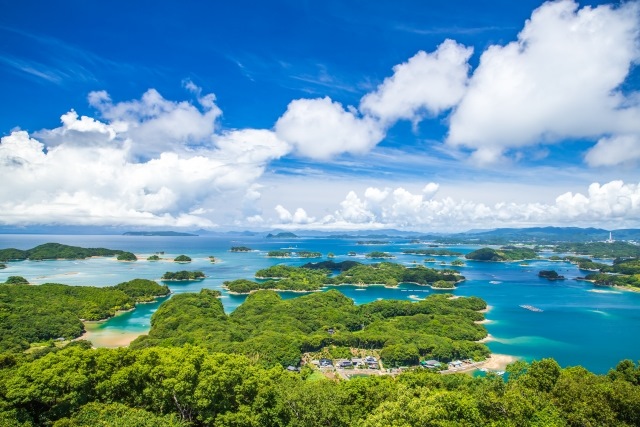
Instagram Worthiness:★★★★★
Photography Opportunity:Check the operating schedule
Location Information: ▶Map, Hours, Routes
Transportation Information: 25 minutes by bus from Sasebo Station, 50 minutes by sightseeing boat
Tsushima
Located between Japan and South Korea, Tsushima is a border island situated at the northernmost point of Kyushu. About 49.5 km from Busan, South Korea, the cityscape of Busan is visible on clear days. The island spans about 82 km from north to south and 18 km from east to west, about one-third the size of Okinawa. Covered by forests on 89% of its land, Tsushima boasts ancient primary forests and abundant nature. The island features unique ria coastlines and emerald-green clear waters, as well as historical and cultural sites like Kaneda Castle and the site of Japanese-Korean diplomatic exchanges. It is also one of the best fishing grounds in Japan, popular for trekking and sea kayaking activities.
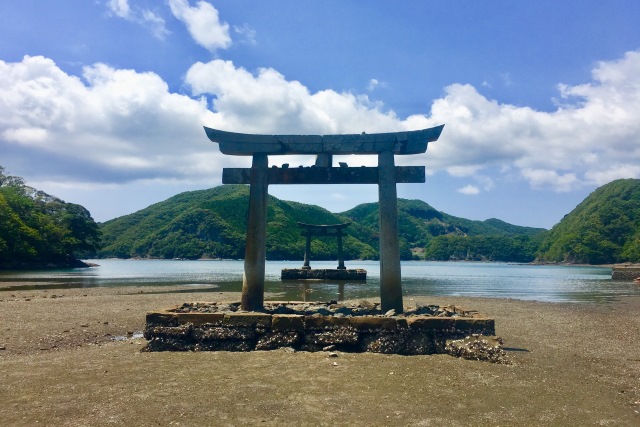
Instagram Worthiness:★★★★★
Photography Opportunity:Check the operating schedule
Location Information: ▶Map, Hours, Routes
Transportation Information: 2 hours and 15 minutes by ferry from Hakata Port
Iki
Iki Island is a remote island in Nagasaki Prefecture, about an hour by high-speed boat from Hakata and 30 minutes by plane from Nagasaki Airport. The island has over ten swimming beaches, featuring natural white sand beaches formed from crushed shells. With crystal-clear emerald-green waters rivaling Okinawa, the island offers delicious gourmet experiences with sea urchins, fresh seafood, and Iki beef. Home to over 150 shrines, the entire island is considered a power spot. The “Saru Iwa” (Monkey Rock) at the tip of Kurozaki Peninsula is a symbol of Iki, known for its resemblance to a “monkey looking away.” The 45-meter-tall giant rock forms a stunning scene with the setting sun, making it an ideal spot for photography.
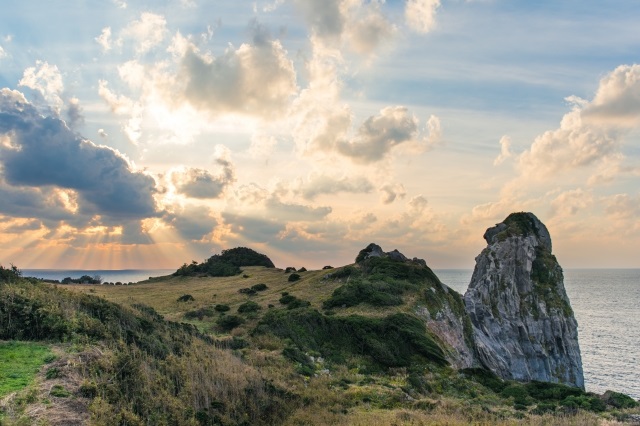
Instagram Worthiness:★★★★★
Photography Opportunity:Check the operating schedule
Location Information: ▶Map, Hours, Routes
Transportation Information: 1 hour and 10 minutes by ferry from Hakata Port
Unzen Jigoku (Unzen Hell)
Located in Unzen Onsen, Unzen Hell is a famous hot spring area known for its boiling waters emerging from the central volcanic crater. The sulfuric springs reach a maximum temperature of 98 degrees, and the steam temperatures rise to 120 degrees. The distinctive sulfur smell and steam rising from the ground create a hellish atmosphere. Unzen Hell is also known for being a site of Christian martyrdom. There are over 30 hells, each with its own legends, including Daikyokan Hell, Oito Hell, and Seishichi Hell.
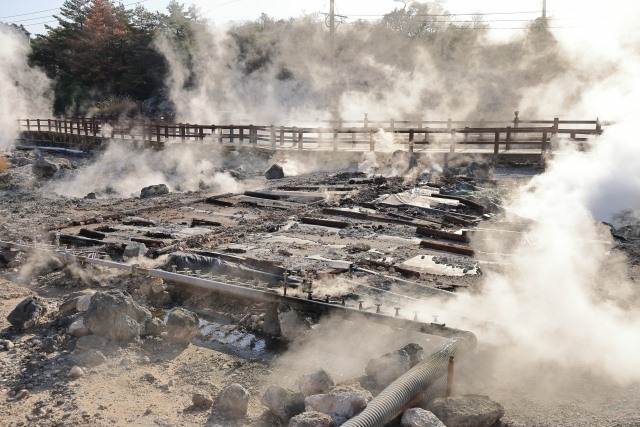
Instagram Worthiness:★★★★★
Photography Opportunity:All seasons
Location Information: ▶Map, Hours, Routes
Transportation Information: 1 hour and 30 minutes by bus from Isahaya Station
